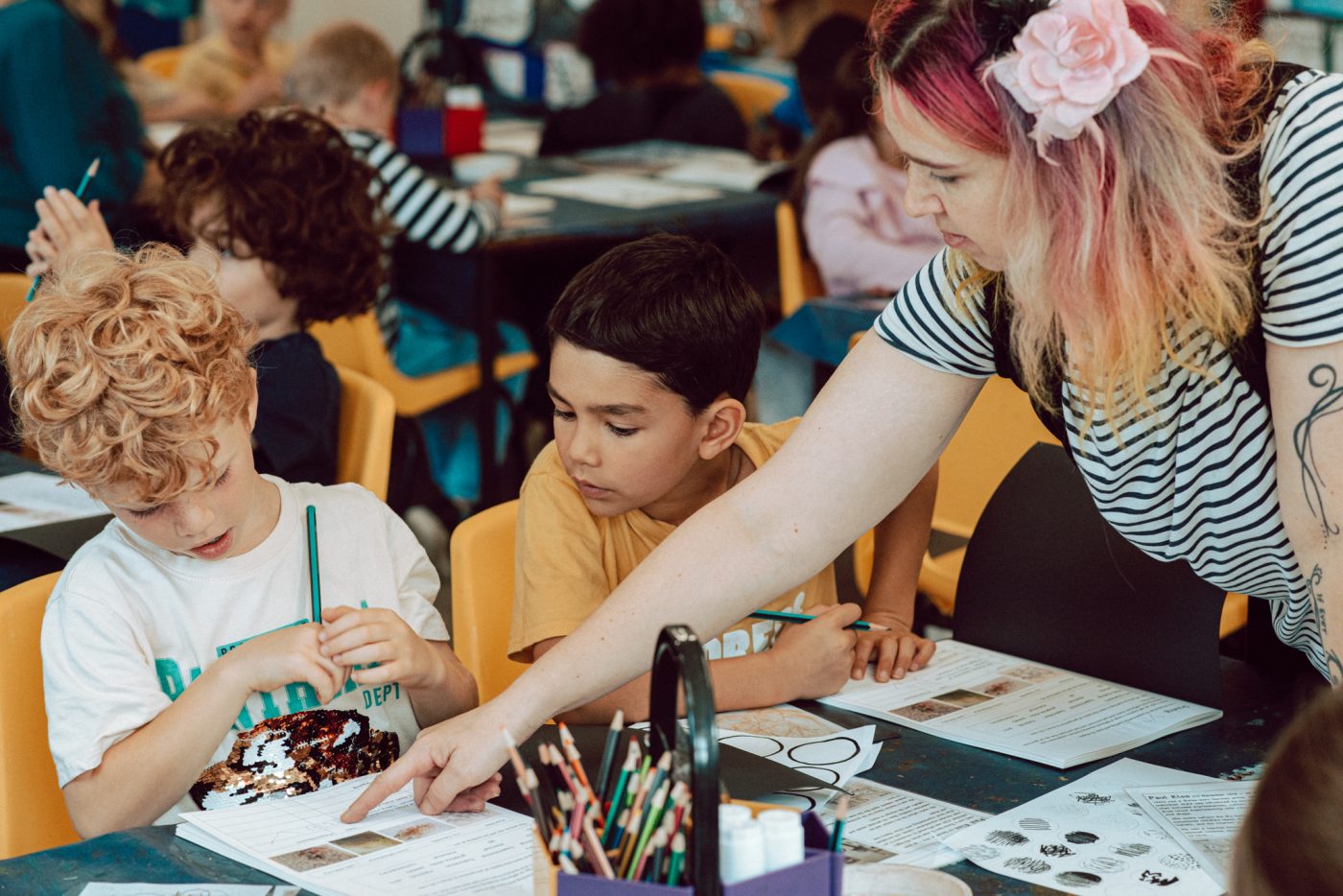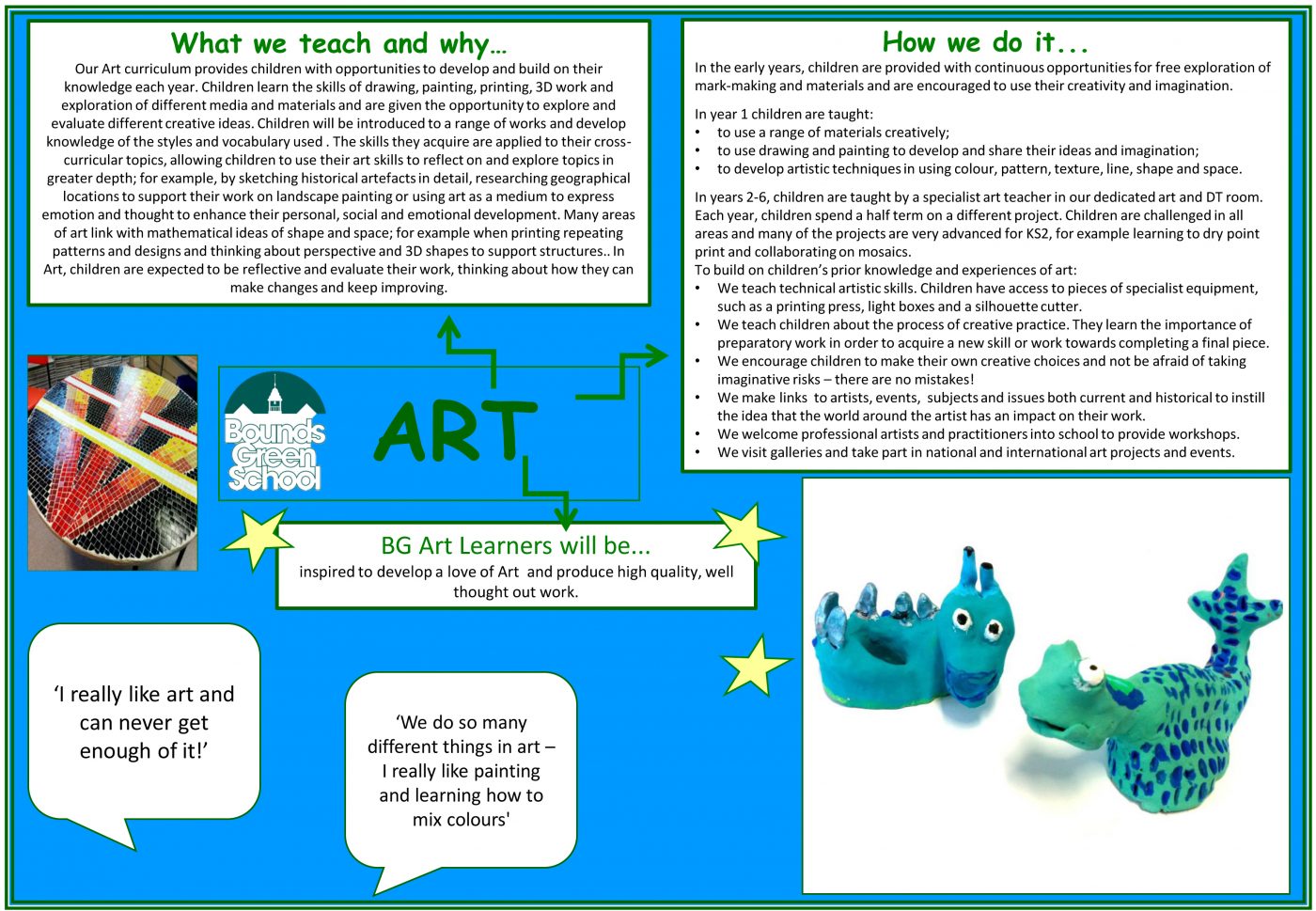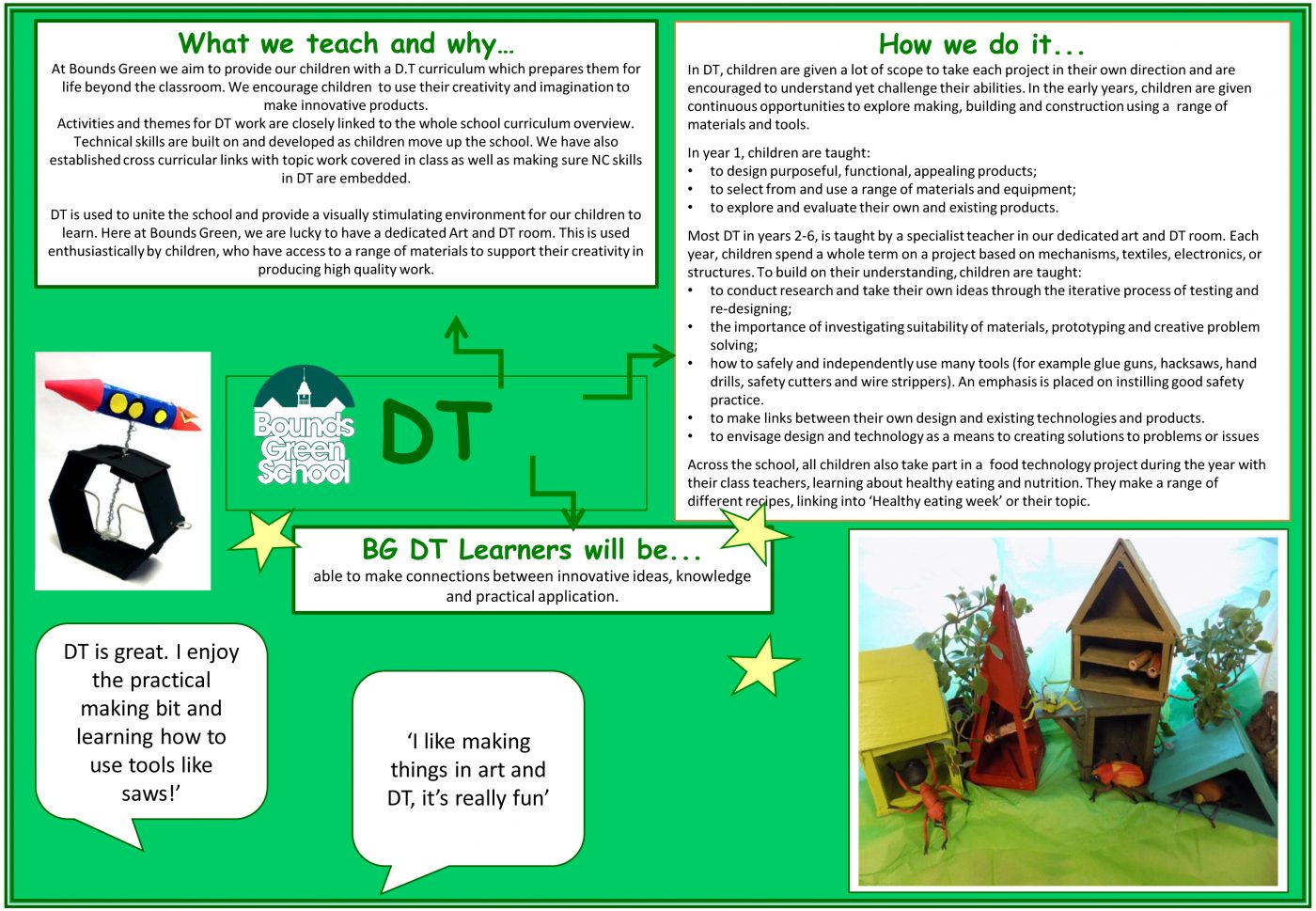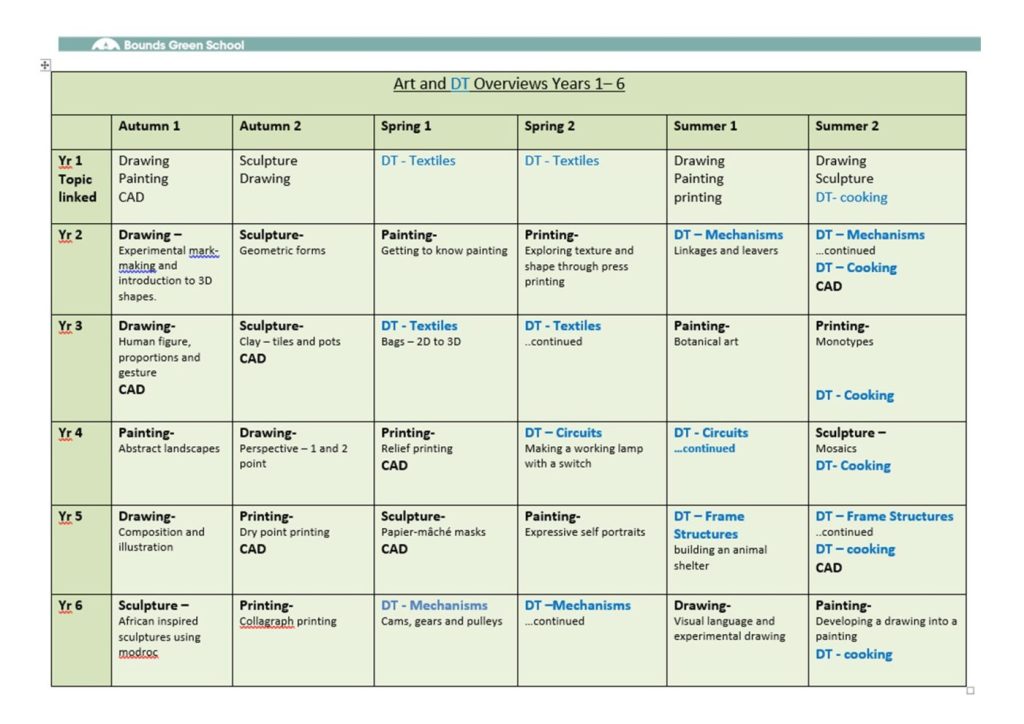Art and DT

Art and DT
Bounds Green is a happy and successful school community because:
· We NURTURE each unique child to value themselves and develop self-worth in order to thrive in life.
· We VALUE respect and responsibility, individuality and inclusivity, confidence and kindness.
· We CHALLENGE every child to be ambitious and achieve success in their learning.
Art and DT curriculum map yrs 1- 6 -23 24
Visual Arts at Bounds Green
Visual Arts are amongst the oldest forms of communication and expression and are fundamental in developing creative thinking, empathy, self-expression and mental wellbeing.
At Bounds Green Art is taught in 3 different ways throughout the school journey. In EYFS it forms part of exploration and learning through play. In Year 1 art is linked closely to topic work in other areas of the curriculum and through years 2- 6 have weekly art lessons taught by a specialist teacher in our dedicated Art room.
Intent
In Art children will learn and develop knowledge and skills in the key areas of Drawing, Painting, Printing and Sculpture. They will also gain some familiarity of critical thinking and digital practices.
We begin with exploration of different materials and mark-marking, inspiring curiosity, a sense of fun and love of art.
This provides a good foundation on which we build up essential and specialist skills, knowledge and vocabulary in each area, becoming more complex each year.
Children will learn how to use elements of visual language such as shape, scale, colour, line, and form. They will be able to critically analyse and discuss the work of Artists both historical and contemporary.
Children will be able to develop their own creative ideas, make their own choices, within a given brief and be able to reflect upon and evaluate their work.
During their time at Bounds Green, children will have the opportunity to work with a wide range of materials both 2D and 3D; including different types of paint, pencils, inks, pastels, papers, clay, plaster, wire and glass.
EYFS
In early Years children are given freedom to discover basic mark-marking and materials through both 2D and 3D activities.
Children will understand the concepts of observation drawings and self-portraits. They will be able to link art to celebrations and create artwork in response to pictures, videos and music.
They will have a basic understanding of pattern, texture and colour, and be able to make links between colour and emotions.
KS1
In KS1 children will go beyond explorative play and begin to actively apply their skills and knowledge to their artwork.
They will learn about specific mark-making and painting techniques
They will be able to draw and paint from reference material.
Make links to the work of artists and start to express opinions and thoughts about the work.
They will gain a basic knowledge of the colour wheel, how to mix primary colours to make secondary and start to make appropriate colour choices.
Link The Arts to world celebrations from different cultures.
Start to work on longer projects that build up skills over a few weeks and culminate in a more resolved piece of artwork.
KS2
In KS2 children will undertake an on-going project every half term, in each of the key visual arts areas- drawing, painting, printing and sculpture.
They will build on their knowledge, skills and vocabulary, with each year becoming more complex and in depth.
They will discover and reflect upon the work of many Artists from around the world both historical and contemporary, forming and discussing their views on the artists intent as well as their own opinions on the work.
Children will learn how to use a starting point topic as inspiration to develop an idea through sketching, experimenting and planning, to create a final piece. They will be able to evaluate their own work and provide constructive criticism to others.
Implementation
- Regular opportunities to be creative.
- Weekly Art lessons with a specialist teacher from year 2 upwards.
- Well thought out sequenced plans of study for each key area, that build on previous skills, spanning the school journey.
- Modules within our computing curriculum provide opportunities to explore digital art skills.
- High standard of example work and demonstrations.
- Review newly acquired knowledge and vocabulary weekly and revise and reference prior knowledge and vocabulary regularly.
- Encourage artistic freedom within each topic.
- Foster the idea that there are no ‘mistakes’ only working out and exploration.
- Provide opportunities for children to engage with the work of artists – through pictures in class, trips and workshops by artistic practitioners.
- Access to a wide range of artists materials.
- Access to specialist equipment such as printing press, light boxes
- Scaffold and challenge all children to develop confidence in their ideas and independence in their application.
- Time to reflect upon and discuss their work with their peers and through written assessments.
- Live assessment and oral feedback during class, allowing children to adapt and develop as they work.
- Develop and sense of pride and achievement by collecting a body of work and displays throughout the school buildings.
- Teachers’ expertise in visual arts teaching is developed through personal practice and carefully identified CPD courses.
Impact
- Build-up of work in sketchbook and portfolios shows development.
- Work on display across the school reflects the quality of children’s learning
- Regular assessment both oral and written demonstrate development of solid knowledge.
- Regular feedback from children shows that they actively enjoy art lessons and are excited about their learning.
- Feedback from outside practitioners demonstrations children’s engagement and understanding, as well as confirming the schools dedication to visual arts.
- Many children choose to join our after-school Art clubs.
- Numerous children go on to select Art at GCSE and beyond.



